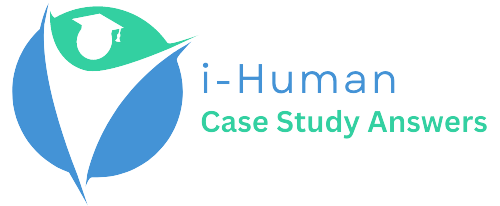The Tod Gouseau iHuman case study focuses on a 57-year-old patient presenting with left knee pain as the chief complaint. This interactive simulation challenges learners to navigate the complexities of diagnosing and managing orthopedic injuries while incorporating evidence-based practices. Understanding the Tod Gouseau iHuman case study is crucial for identifying the underlying causes of his condition, crafting an accurate diagnosis, and designing an effective management plan.
Tod Gouseau iHuman Case Overview
The Tod Gouseau iHuman case study presents a middle-aged male experiencing persistent left knee pain, particularly aggravated by physical activity. His history reveals past sports-related injuries, chronic discomfort, and occasional swelling. Despite the absence of systemic symptoms like fever, weight loss, or fatigue, his lifestyle and occupational habits suggest repetitive strain, contributing to his condition.
Key aspects of Tod’s case:
- Chief Complaint: Left knee pain worsened by movement.
- History: Prior knee injury, intermittent pain episodes exacerbated by activity.
- Physical Examination: Swelling, joint line tenderness, limited range of motion.
- Impact on Daily Life: Difficulty performing routine activities, reduced mobility.
This case highlights the importance of comprehensive assessment and individualized care in orthopedic conditions.
Key Clinical Presentation
Tod Gouseau’s clinical symptoms and history guide the development of a differential diagnosis and targeted treatment plan.
History of Present Illness (HPI):
- Pain Characteristics: Persistent, localized pain in the left knee.
- Onset: Gradual worsening over time.
- Aggravating Factors: Physical activity, prolonged standing.
- Alleviating Factors: Rest, elevation, mild analgesics.
- Associated Symptoms: Occasional swelling, joint stiffness.
Physical Examination Findings:
- Joint tenderness along the medial joint line.
- Mild effusion without signs of infection.
- Pain with weight-bearing and flexion.
- Negative Lachman and McMurray tests (suggesting a chronic condition rather than acute ligamentous injury).
Tod Gouseau iHuman Diagnosis
Differential Diagnoses:
Based on his symptoms and history, several possible diagnoses include:
- Osteoarthritis (OA):
- Most likely diagnosis.
- Common in middle-aged individuals with a history of joint strain.
- Characterized by joint stiffness, pain, and swelling.
- Meniscal Tear:
- Possible due to past trauma.
- May present with clicking or locking sensation.
- Patellofemoral Pain Syndrome (PFPS):
- Overuse or malalignment may contribute to anterior knee pain.
- Gout or Pseudogout:
- Acute pain episodes with swelling.
- Ruled out due to lack of systemic symptoms.
- Rheumatoid Arthritis (RA):
- Unlikely due to unilateral pain and absence of systemic inflammatory signs.
Diagnostic Workup:
To confirm the diagnosis, targeted investigations are necessary:
- X-rays: To identify joint space narrowing, osteophytes, or fractures.
- MRI: To assess soft tissue integrity (meniscal or ligamentous injury).
- Joint Aspiration: To rule out infection or crystal arthropathy.
Based on imaging and clinical correlation, OA with possible secondary meniscal degeneration is the most probable diagnosis.
Mechanism of Injury
The Tod Gouseau iHuman injury likely stems from a combination of past trauma and chronic overuse. The meniscus serves as a cushion between the femur and tibia, absorbing shock and stabilizing the knee joint. Repetitive stress or previous injuries can cause degenerative tears, leading to pain, swelling, and restricted mobility.
Contributing Factors:
- Aging & Wear-and-Tear: Reduced cartilage elasticity increases susceptibility.
- Repetitive Motion & Strain: Occupational and recreational activities contribute to progressive damage.
- Biomechanical Issues: Poor gait or alignment exacerbates joint stress.
Management Plan
The management of Tod Gouseau’s knee pain involves a stepwise approach to reduce symptoms, improve function, and prevent further deterioration.
Non-Surgical Management:
Pain Relief:
- NSAIDs (e.g., Ibuprofen, Naproxen).
- Topical analgesics for localized relief.
Physical Therapy:
- Strengthening exercises (quadriceps, hamstrings).
- Stretching routines to improve flexibility.
- Activity modification to prevent exacerbation.
Assistive Devices:
- Knee brace for additional support.
- Orthotic inserts to improve biomechanics.
Surgical Options:
If symptoms persist despite conservative treatment, arthroscopic surgery (meniscal repair or partial meniscectomy) may be necessary.
Long-Term Management:
- Weight management to reduce joint stress.
- Regular follow-ups to monitor disease progression.
Patient Education and Prevention
Educating Tod about his condition is vital for improving long-term outcomes. Key educational points include:
- Understanding OA and meniscal injuries.
- Rehabilitation adherence for long-term mobility.
- Recognizing early signs of worsening symptoms.
- Using joint protection strategies (e.g., proper footwear, ergonomic adjustments).
Preventive Strategies:
- Maintaining a healthy weight to minimize knee stress.
- Engaging in low-impact exercise (e.g., swimming, cycling).
- Using protective gear during physical activity.
Relevance in Medical Education
The Tod Gouseau iHuman case study is an essential tool for medical students and professionals, providing hands-on experience in:
- History-taking and physical examination.
- Developing differential diagnoses.
- Interpreting imaging and lab findings.
- Formulating evidence-based treatment plans.
Tod Gouseau iHuman Case Study Assignment Help
For expert assistance with the Tod Gouseau iHuman case study, including tailored guidance on differential diagnosis, treatment plans, and SOAP notes, visit i-humancasestudyanswers.com. Our platform provides plagiarism-free, detailed, and customized solutions to help you excel in your assignments.
FAQs on Tod Gouseau iHuman Case Study Assignment Help
What is the Tod Gouseau iHuman Case Study about?
The Tod Gouseau iHuman case study focuses on a patient presenting with left knee pain. It involves evaluating the patient’s history, performing a thorough physical examination, and developing a differential diagnosis based on the findings. The case is designed to enhance critical thinking and diagnostic reasoning skills for healthcare students.
How can your services assist with the Tod Gouseau iHuman assignment?
Our services provide comprehensive guidance for completing the Tod Gouseau iHuman case study. We help students interpret patient history, document findings, create differential diagnoses, and develop evidence-based treatment plans. Additionally, we ensure all submissions meet academic and clinical standards.
What are the common challenges students face in the Tod Gouseau iHuman case study?
Students often struggle with identifying key elements of the patient history, conducting accurate physical assessments, and formulating differential diagnoses. Interpreting test results and aligning them with the patient’s symptoms can also be challenging. Our experts provide tailored support to overcome these difficulties.
Do you provide plagiarism-free solutions for the Tod Gouseau iHuman case study?
Yes, all our assignments are 100% plagiarism-free. Our team of experienced professionals ensures that the solutions provided are original, evidence-based, and tailored to the specific requirements of the Tod Gouseau iHuman case study.
Can you help with the differential diagnosis and management plan for Tod Gouseau?
Absolutely! We assist with creating a well-researched differential diagnosis for Tod Gouseau based on the case findings. Additionally, we guide students in developing a detailed and evidence-based management plan, including appropriate tests, treatments, and follow-up care.
Must Read:



